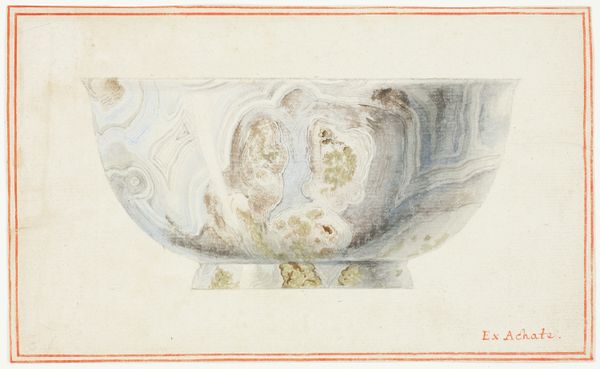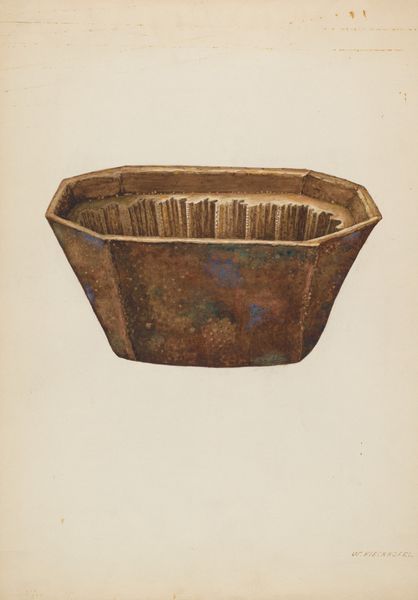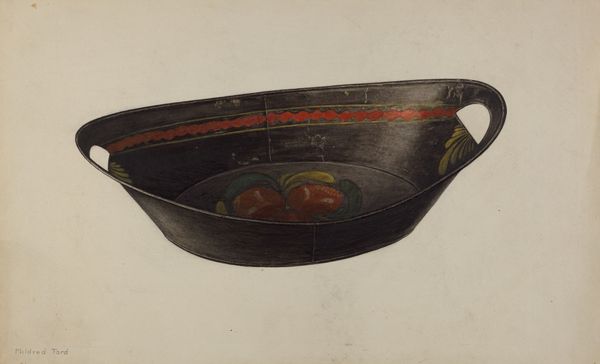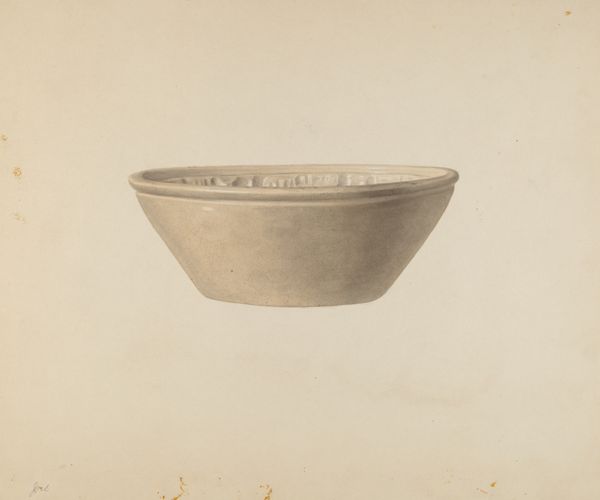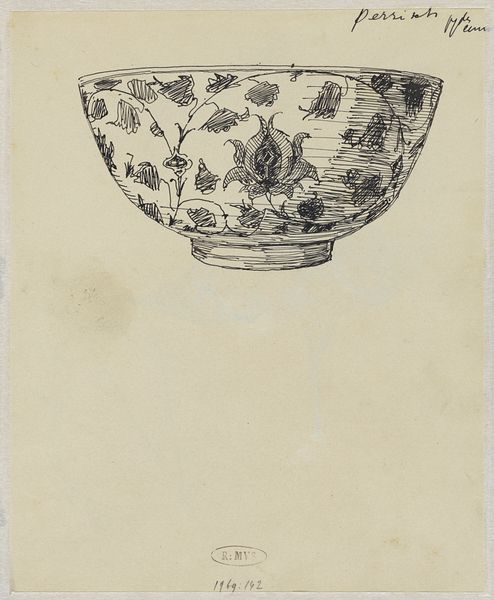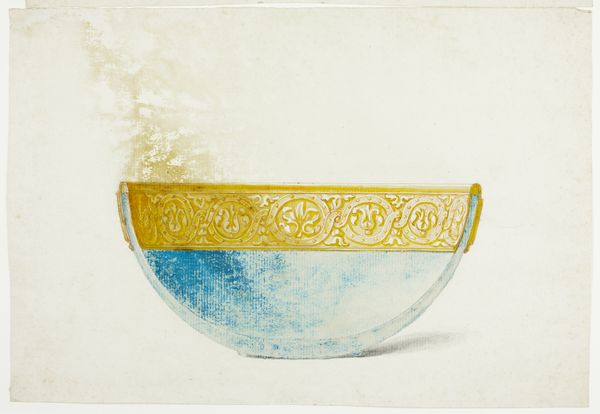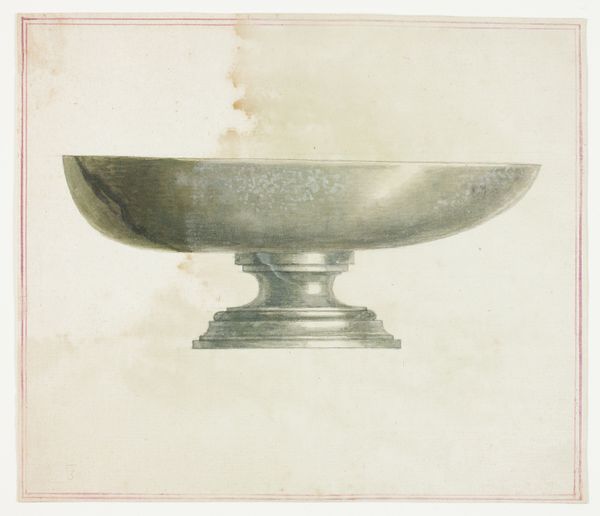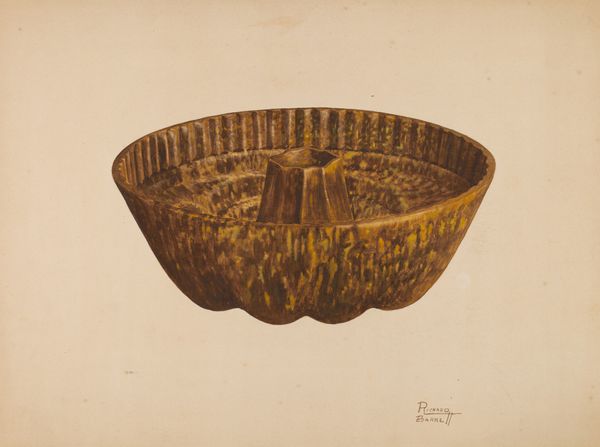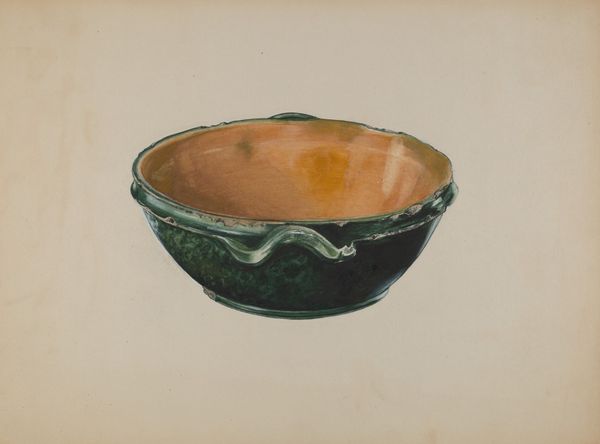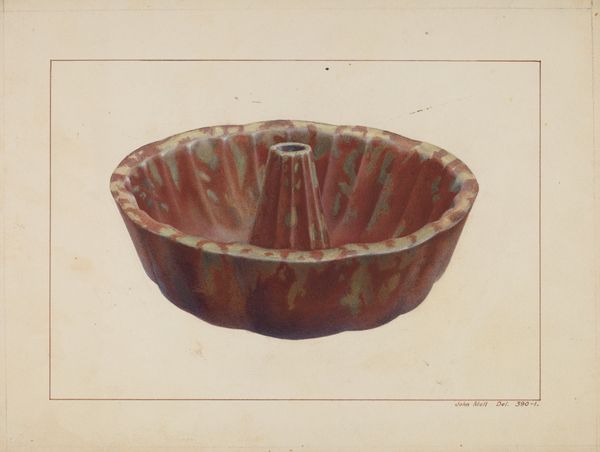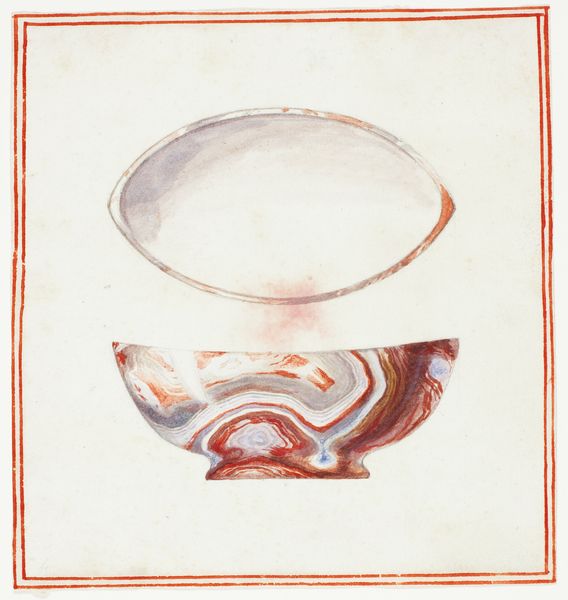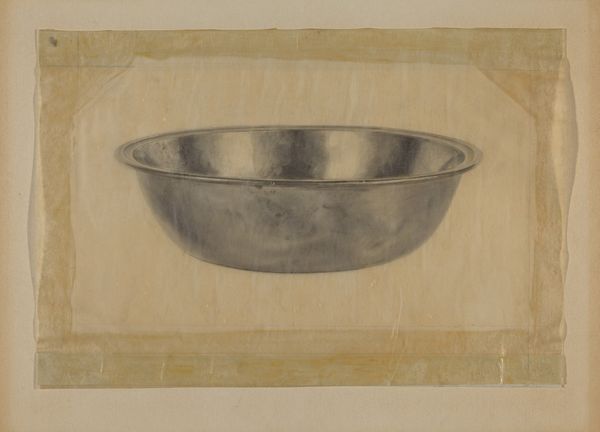
drawing, print, gouache, ceramic, paper, watercolor, ink, chalk
#
drawing
# print
#
gouache
#
ceramic
#
paper
#
watercolor
#
ink
#
geometric
#
chalk
#
ceramic
#
water
Dimensions: 93 × 149 mm
Copyright: Public Domain
Curator: Here we have a piece listed as “Black Marble Bowl,” its creation undocumented, simply marked “n.d.” for no date. The museum credits it to the hand of Giuseppe Grisoni. Editor: The initial impression is of weight. It has the heft of stone but a fragile delicacy to it as well. I also find a cosmic feeling; those white flecks evoke star clusters. Curator: Interesting, that perception certainly emerges from its materiality. It appears to be executed using a combination of chalk, watercolor, ink, gouache, drawing, and print techniques on paper, mimicking ceramic perhaps? Or even aspiring to immortalize daily tableware into high-class art. Editor: Beyond simple depiction, though, I feel an evocation of offering—of sustenance both physical and spiritual. The bowl as a receptacle is a universal symbol across cultures. What do you think of this idea related to its usage? Curator: I'd argue we need to consider the social aspect too. What would a black marble bowl, rendered on paper with such techniques, have represented to Grisoni's intended audience, presumably wealthy clients or patrons? Editor: Well, black marble itself has always been associated with luxury and power, hasn't it? Perhaps this drawing acts as both a design proposal and a symbol of cultivated taste? Curator: Precisely. It signifies access, luxury materials obtained through global trading networks and skilled artisanship. This isn't merely about representation, but rather the display of elite social status through art and the skill needed for this kind of representation, that too has status. Editor: I see what you're getting at; it makes it more than just an object and elevates it to almost an aspiration for a domestic space filled with refined beauty and classical reference points. Thank you for elucidating such ideas behind material, I appreciate your help to connect objects to the greater symbolic cultural relevance. Curator: It's a reciprocal benefit, really. It's helped highlight aspects of artistic production and socio-economic standing during that period. Thank you.
Comments
No comments
Be the first to comment and join the conversation on the ultimate creative platform.

